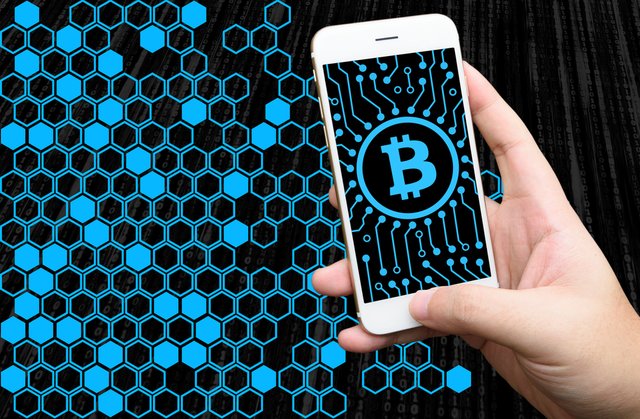The Trust Protocol - Blockchain Article
THE TRUST PROTOCOL
It appears that once again, the technological genie has been unleashed from its bottle. Summoned by an unknown person or persons with unclear motives, at an uncertain time in history, the genie is now at our service for another kick at the can—to transform the economic power grid and the old order of human affairs for the better. If we will it.
Let us explain.
The first four decades of the Internet brought us e-mail, the World Wide Web, dot-coms, social media, the mobile Web, big data, cloud computing, and the early days of the Internet of Things. It has been great for reducing the costs of searching, collaborating, and exchanging information. It has lowered the barriers to entry for new media and entertainment, new forms of retailing and organizing work, and unprecedented digital ventures. Through sensor technology, it has infused intelligence into our wallets, our clothing, our automobiles, our buildings, our cities, and even our biology. It is saturating our environment so completely that soon we will no longer “log on” but rather go about our business and our lives immersed in pervasive technology.
Overall, the Internet has enabled many positive changes—for those with access to it—but it has serious limitations for business and economic activity. The New Yorker could rerun Peter Steiner’s 1993 cartoon of one dog talking to another without revision: “On the Internet, nobody knows you’re a dog.” Online, we still can’t reliably establish one another’s identities or trust one another to transact and exchange money without validation from a third party like a bank or a government. These same intermediaries collect our data and invade our privacy for commercial gain and national security. Even with the Internet, their cost structure excludes some 2.5 billion people from the global financial system. Despite the promise of a peer-to-peer empowered world, the economic and political benefits have proven to be asymmetrical—with power and prosperity channeled to those who already have it, even if they’re no longer earning it. Money is making more money than many people do.
Technology doesn’t create prosperity any more than it destroys privacy. However, in this digital age, technology is at the heart of just about everything—good and bad. It enables humans to value and to violate one another’s rights in profound new ways. The explosion in online communication and commerce is creating more opportunities for cybercrime. Moore’s law of the annual doubling of processing power doubles the power of fraudsters and thieves—“Moore’s Outlaws”—not to mention spammers, identity thieves, phishers, spies, zombie farmers, hackers, cyberbullies, and datanappers—criminals who unleash ransomware to hold data hostage—the list goes on.
IN SEARCH OF THE TRUST PROTOCOL
As early as 1981, inventors were attempting to solve the Internet’s problems of privacy, security, and inclusion with cryptography. No matter how they reengineered the process, there were always leaks because third parties were involved. Paying with credit cards over the Internet was insecure because users had to divulge too much personal data, and the transaction fees were too high for small payments.
In 1993, a brilliant mathematician named David Chaum came up with eCash, a digital payment system that was “a technically perfect product which made it possible to safely and anonymously pay over the Internet. . . . It was perfectly suited to sending electronic pennies, nickels, and dimes over the Internet.” It was so perfect that Microsoft and others were interested in including eCash as a feature in their software. The trouble was, online shoppers didn’t care about privacy and security online then. Chaum’s Dutch company DigiCash went bankrupt in 1998.
Around that time, one of Chaum’s associates, Nick Szabo, wrote a short paper entitled “The God Protocol,” a twist on Nobel laureate Leon Lederman’s phrase “the God particle,” referring to the importance of the Higgs boson to modern physics. In his paper, Szabo mused about the creation of a be-all end-all technology protocol, one that designated God the trusted third party in the middle of all transactions: “All the parties would send their inputs to God. God would reliably determine the results and return the outputs. God being the ultimate in confessional discretion, no party would learn anything more about the other parties’ inputs than they could learn from their own inputs and the output.” His point was powerful: Doing business on the Internet requires a leap of faith. Because the infrastructure lacks the much-needed security, we often have little choice but to treat the middlemen as if they were deities.
A decade later in 2008, the global financial industry crashed. Perhaps propitiously, a pseudonymous person or persons named Satoshi Nakamoto outlined a new protocol for a peer-to-peer electronic cash system using a cryptocurrency called bitcoin. Cryptocurrencies (digital currencies) are different from traditional fiat currencies because they are not created or controlled by countries. This protocol established a set of rules—in the form of distributed computations—that ensured the integrity of the data exchanged among these billions of devices without going through a trusted third party. This seemingly subtle act set off a spark that has excited, terrified, or otherwise captured the imagination of the computing world and has spread like wildfire to businesses, governments, privacy advocates, social development activists, media theorists, and journalists, to name a few, everywhere.
“They’re like, ‘Oh my god, this is it. This is the big breakthrough. This is the thing we’ve been waiting for,’” said Marc Andreessen, the cocreator of the first commercial Web browser, Netscape, and a big investor in technology ventures. “‘He solved all the problems. Whoever he is should get the Nobel Prize—he’s a genius.’ This is the thing! This is the distributed trust network that the Internet always needed and never had.”
Today thoughtful people everywhere are trying to understand the implications of a protocol that enables mere mortals to manufacture trust through clever code. This has never happened before—trusted transactions directly between two or more parties, authenticated by mass collaboration and powered by collective self-interests, rather than by large corporations motivated by profit.
It may not be the Almighty, but a trustworthy global platform for our transactions is something very big. We’re calling it the Trust Protocol.
This protocol is the foundation of a growing number of global distributed ledgers called blockchains—of which the bitcoin blockchain is the largest. While the technology is complicated and the word blockchain isn’t exactly sonorous, the main idea is simple. Blockchains enable us to send money directly and safely from me to you, without going through a bank, a credit card company, or PayPal.
Rather than the Internet of Information, it’s the Internet of Value or of Money. It’s also a platform for everyone to know what is true—at least with regard to structured recorded information. At its most basic, it is an open source code: anyone can download it for free, run it, and use it to develop new tools for managing transactions online. As such, it holds the potential for unleashing countless new applications and as yet unrealized capabilities that have the potential to transform many things.

